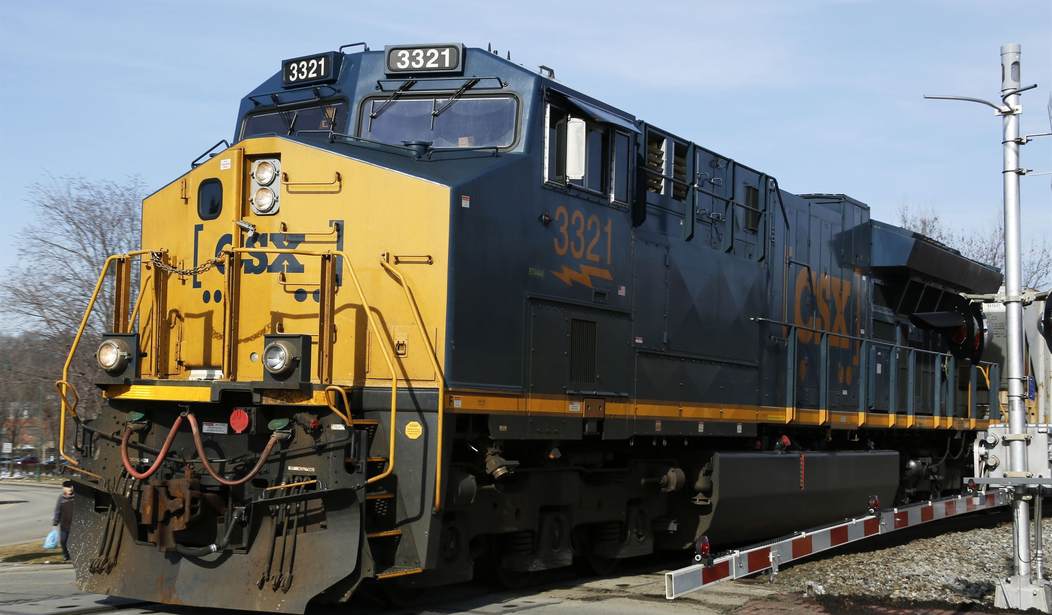If it’s not averted outright, a potentially devastating rail-workers strike has at least gotten postponed by several weeks. Following an intensive effort by the White House to avoid the economic damage that would otherwise have occurred, unions and employers finally cut an 11th-hour deal:
The tentative deal — confirmed by a group representing freight rail operators — still faces several steps before it is formally ratified. The unions must still vote on it, but the White House’s blessing of the new terms suggests that the worker groups have been closely involved. Often, the next step of the process can take several weeks, but during that time, union members agree not to strike.
The deal includes new leave policies, a significant concession by train carriers to workers who had demanded greater flexibility to be able to miss work for medical emergencies without being fired or punished, according to two people familiar with the matter who spoke on the condition of anonymity to describe details of the negotiation not yet released. …
The implications of a rail strike could have been monumental, snarling the movement of goods and potentially leading to massive layoffs. Large parts of the nation’s economy move through the rail system. And the disruption on commuter trains also would have been felt across the country. Strikes were planned in major cities, including Stockton, Calif.; Cleveland; and Baltimore. This could have caused major supply chain disruptions, driving up prices on a range of goods during a period of high inflation.
The political consequences of a rail strike less than two months before the midterm elections also could have been enormous for Democrats, who could have been blamed for not securing a deal. Biden was involved in the talks all week, as were three of his Cabinet secretaries, his top economic adviser and his chief of staff.
What happens if this “tentative” deal falls through? Negotiators can strike a dealm but worker still have to ratify it. That will take some time, though, during which workers will remain on the job. And if they reject it, Reuters reports that the language of the proposal almost certainly contains language that will keep workers on the job for another several weeks to work on a different deal:
The tentative deal now goes to the unions to be voted on, according to a person familiar with the negotiations.
Even if those votes fail, a rail shutdown that could have happened as soon as midnight Friday has been averted for several weeks due to the standard language included in such a deal, this person said.
Joe Biden and the White House are already touting it as “an important win for the economy,” but that’s not quite accurate:
President Biden said the tentative deal “is an important win for our economy and the American people.” He credited the unions and rail companies “for negotiating in good faith and reaching a tentative agreement that will keep our critical rail system working and avoid disruption of our economy.” …
The Association of American Railroads, or the AAR, which represents the nation’s freight railroads, said three unions representing around 60,000 workers had reached a tentative agreement that included new contracts providing rail employees with a 24% wage increase during the five-year period from 2020 through 2024, including an immediate payout on average of $11,000 upon ratification. The association didn’t mention whether changes to attendance policies were made as part of the deal.
This doesn’t amount to an “important win for the economy.” What it does do is avoid a devastating loss to the economy. That’s certainly notable, but this agreement does nothing to deal with the supply-chain crises and distribution-chain breakdowns that the Biden administration largely ignored for the last twenty months. That status quo ante has not been disturbed by this deal, but at least this deal prevents it from getting disastrously worse. That’s something, but not terribly much like a win.
It doesn’t look like the workers got much of a win either, after two years of attempting to negotiate a new deal. The WSJ can’t say whether they won concessions on sick leave and personal time off, which the Washington Post reported that Biden in particular wanted. It seems unlikely that the unions would have conceded on those points for the wage gains in the deal, as reported. A 24% wage increase over five years would be notable in a normal economic environment. For the past year, however, this has been the economic environment in which those wages have to work:

The consumer-price index inflation rate has been well over 5% for the last year. Presumably that will come down at some point, but these workers have already lost real wages significantly over the past year at their previous rate. Now their deal will give them a decent nominal raise that, on average, would still have them losing ground every year at the current rate of inflation.
One has to wonder whether the workers themselves will balk at this proposal for that reason. If inflation had gotten back under control at this point, the deal would probably look pretty good, but … it’s not, and 4.9% annual average raises don’t look very good as a result. They’ll probably accept it, though, because the deal likely won’t get much sweeter than this. They’d have to strike to get more, and a strike would only lose them money. At this point, the juice is not worth the squeeze.
As for Biden and his “win,” there’s another problem looming. Costs for transportation of goods will now rise even further as rail companies have to absorb the higher wages into their profit calculations. That will impact prices for consumers and for distributors, which means the upward pressure on the CPI and the producer-price index will intensify and extend out for the next few years. That may have been inevitable in this labor standoff, but it’s still hardly a “win” for the economy or for Biden in the long run. It’s just not a huge loss in the short term.
Update: Steve Eggleston brings up a couple of important points in the comments below. I neglected to account for the compounding that takes place over a period of years; he did the calculation and came up with an average annual increase of 4.3%. The $11,000 bonus amounts to an instant increase of 14%, as he points out. However, this looks to me like an effort to supply a retroactive compensation for wage loss over the two-year negotiation period. It’s still a nice bump, but even at 14%, it’s not as significant in an environment where CPI is running at 8.3% annually.








Join the conversation as a VIP Member